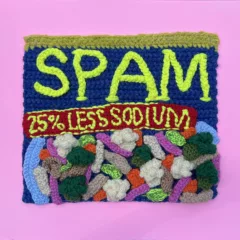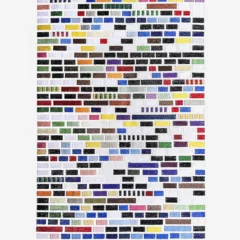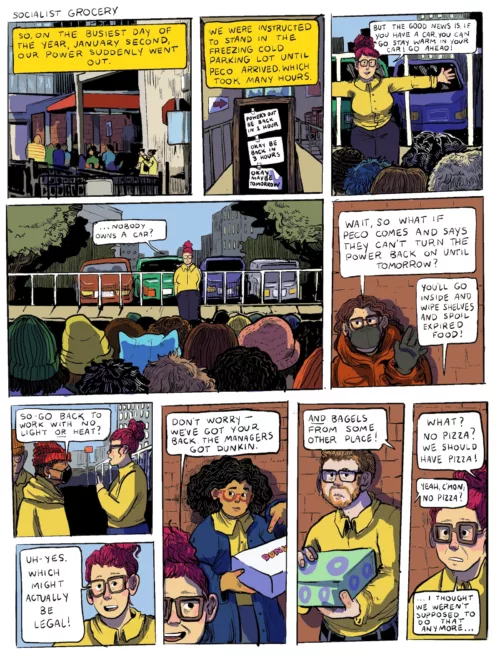Introduction
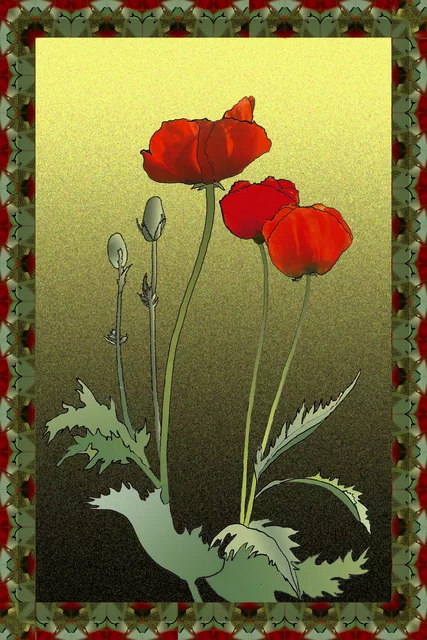
Nancy Herman opened her Nancy Herman Gallery in Narberth, PA, in March, 2022. The world was not yet out of the Covid pandemic and the economic downturn was a threat, but Nancy, who is an artist, was up for the challenge. While the gallery opened in 2022, it had been in the planning for some time. Also – and this, in my experience, is unique – the gallery shares space with Pilates equipment from the adjoining Pilates studio. [Before openings, they move the Pilates equipment out of the space.] I visited the gallery in 2023 during the exhibition, Blooming, which featured Roz Bloom, Zola Bryen, Nancy Herman, Maxine Manges, Virginia Moore, Marylyn Waltzer. Below is the transcript of our discussion edited for length and clarity.
Roberta: What’s the kernel – the starting point, impetus, idea – when you make something in Photoshop?
Nancy: Well, it depends. When I’m translating music to color, it’s the sheet music. It’s a scientific exercise, really. I have my ‘tuned set’ of colors, and if there’s a C, it’s red, if it’s a C sharp, it’s red violet. The color takes up as much space as the time. If it’s a half note, it’s a half space. If it’s a quarter, note, it’s a quarter space. I start in the middle and work to the outside. Each color/note touches the one before it and the one after it. It’s very tedious, but I find it satisfying, because the colors always turn out to be beautiful and they are in effect chosen by the composer.
Roberta: Well, and the patterns too. I mean, you think about music, music is patterning.
Nancy: It is a pattern.
Roberta: Lots of repeats. And crescendos and decrescendos.
Nancy: Now that’s one thing I can’t do. I can’t do dynamics.
Roberta: Okay. Not even with, like, emphasizing?
Nancy: I could make certain parts bigger, which I’ve thought about, but I have not found a way to do it that’s satisfying.
I want to be able to play colors in time. I believe that if you were able to play colors in time, you could make music with color, without sound at all, just color. The reason we can make music is because we have an instrument – we can sing. And then from that came everything else. The instruments were made because people could sing. They had the idea, they wanted to make sounds come out in a sequence.
Roberta: That’s interesting. So, we know about the wheel (being created) back in the Stone Age and Fire and all that. The Iron Age. Do we know about the early instruments?
Nancy: I think music is the most wonderful thing that human beings have created. When you think about it, the composer composes something, writes it down, and people spend their lives perfecting the ability to play the instrument or sing or whatever, in order to perform what is written. And then they get together, submit themselves to a conductor and the music. Fabulous. And it reaches from one culture to another.
Roberta: And it’s shared. That’s the thing that art and music have in common. You don’t make it and then put it in a box and let it sit there. For most artists, the impulse is to share it and communicate and have conversations. Both art and music do that in a really nice way, I think.
Nancy: Music better than art, I think. People are more afraid of art than they are of music.
Roberta: People have been conditioned to be afraid of art, and also art took a turn for the worse when abstraction came in, I do believe. Art separated itself from the public. You know, you think of what came before abstract art, the Impressionists. I mean, that was already stepping a little bit away from the accepted academic taste of painting a realistic face, body, whatever.
Nancy: But there were still recognizable things.
Roberta: Yes, that’s right. But abstraction, pure abstraction, Malevich and Mondrian and all those guys back then, it was like people (the public) didn’t get it. And the artists were loving it. And talking to each other. And then the critics loved it, and the academics finally tumbled in. And that created this chasm between the public and art. And you know, people love beauty. And some abstract art is beautiful. A lot of it is beautiful in fact. But because people look at it and say, ‘Oh, I don’t understand,’ they turn away. And abstract art is missing some emotion. Abstract art doesn’t have as much, in my opinion, emotion as representational art. Things that you can look at that feed your imagination – and generate emotion.
Nancy: Some abstract art does.
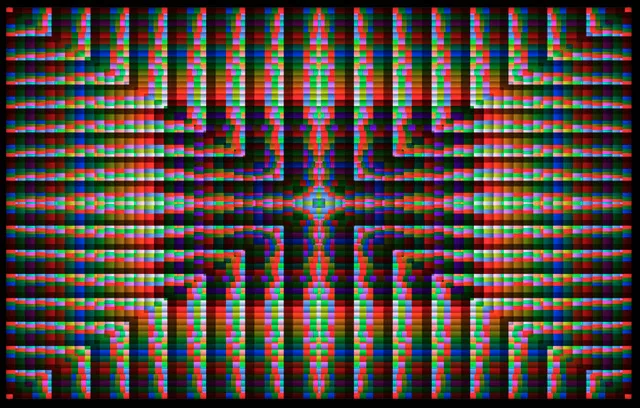
Roberta: Well, meditative things. Mandalas…some op art…Victor Varsarely with repeat patterns and whatnot.
Nancy: (Richard) Anuszkiewicz – do you know his work? I may not be pronouncing it right. He does things with color that I think are really fabulous. There’s another, with a whole chapel of his work. I can’t think of his name. Anyway, his work, I think, moves me.
Roberta: Mark Rothko. Oh, it moves a lot of people. I think it’s meditative.
Nancy: Frankly, I don’t like Picasso’s work except for Guernica.
Roberta: That’s passionate stuff, emotionally charged.
Nancy: A lot of it, you know, he’s clever. He was a master at what he did, but who cares? I wouldn’t have it in my house.
Roberta: That’s a great quote. Haha
Nancy: Please don’t quote me. I’ll lose all my friends, haha
Roberta: What’s your relationship to math? Mathematics, because you do things on the web, you’re very organized and your love of music and colors. It’s theoretical, high level thinking. Did you like mathematics in school?
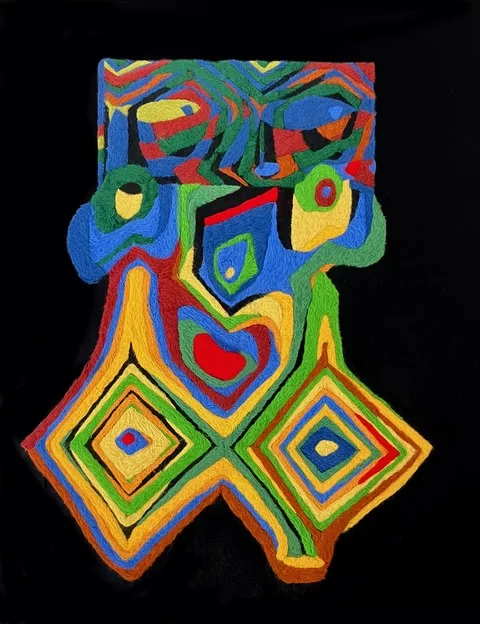
Nancy: I liked it but was not good at it. I had a very poor education basically until I went to college. Luckily I got into college because I went from one school to another because we moved a lot and I ended up at Norristown High School, which was not so hot. But I managed to get into Cornell. And I studied art there. After the first year I couldn’t afford it. Worked for a while in an advertising agency and then I worked during the day at Penn (University of Pennsylvania) in the Alumni Annual Giving Office of the Law School and went to school at night full time, and then I got a full scholarship to Penn.
I majored in Architecture, as I realized that it was important to be able to make a living, but after a year I got married and I didn’t finish in Architecture. I did finish later at Penn, in art, after my four kids were in school, — with criticism from Neil Welliver and Racksdraw Downes. I don’t know if you know his work. And that was great – they got me outside painting. But my art education was pretty sketchy, except for a class originated by Josef Albers and taught at the Bauhaus, on the interaction of color. That is what got me thinking a bout translating music to color. The way colors interacted reminded me of the ways notes interact in, say, a fugue.
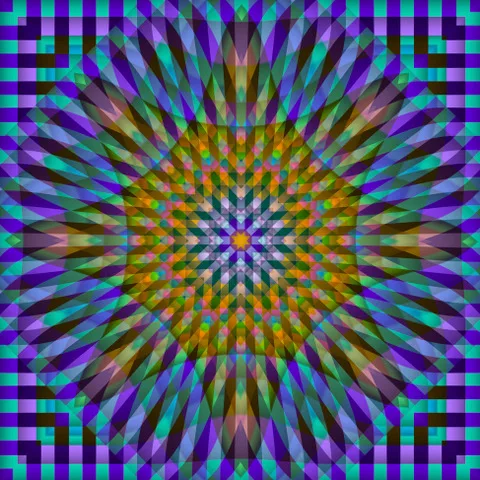
Roberta: Did your family introduce you to art materials when you were growing up?
Nancy: My mother’s two older sisters and my grandmother all painted. My grandmother had a painting session in her little den. They painted, I can’t believe this, but they painted with oil paints in her little den. They didn’t make a mess somehow. Wow. They copied postcards. One of my aunts sang in the church and my other aunt played the organ. So there was music and my grandma would play the piano. My grandfather would sing. I had music and art. It was definitely in my life.
Roberta:That’s a lot. Usually people have one or the other, but not both. So to have both is pretty nice.
Nancy: And my mother always felt that she couldn’t do either of those things, although it’s not true. She played the piano and sang and she also later life painted, and I thought she did very well.
Roberta: Interesting. Let’s talk about the “Relics From the Future,” which is another example of you using patterning and creating something in Photoshop that’s brightly colored and repeat pattern, and then you find things – like faces – in the abstract patterns.
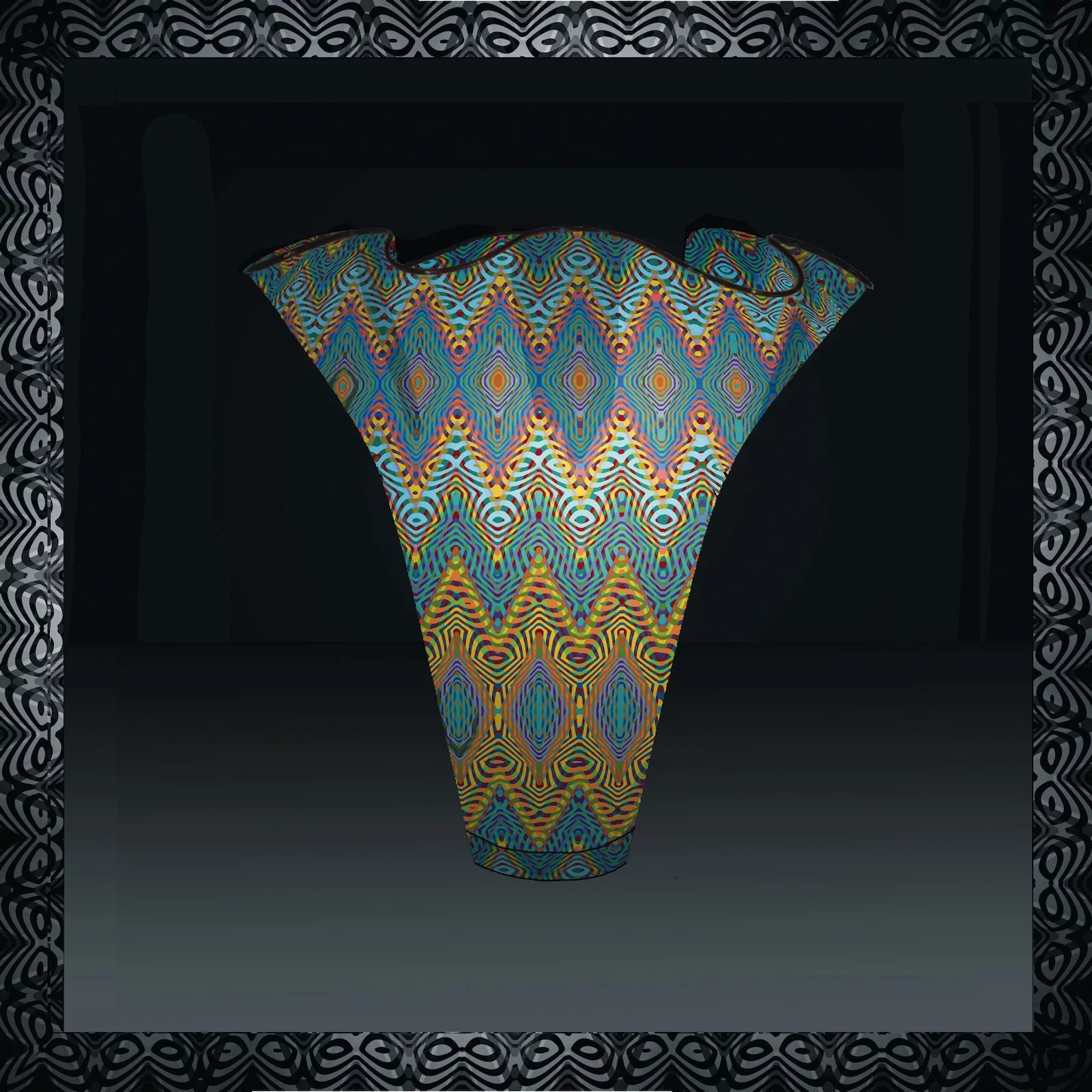
Nancy: Yes. Well, I use the colors from my translations of music to create the faces. And I developed them by accident because I do play in Photoshop. It just happened by accident once and I wrote down the formula, and now I can almost always create faces from this formula.
Roberta: So is it true to say that you created the formula? You didn’t find it like you Googled up ‘I want a formula to create a face in Photoshop?’
Nancy: On no. But I wonder if I could do that with artificial intelligence?
Roberta: Yes. I want to ask you about artificial intelligence.
Nancy: The only time I’ve ever used it was when I had an argument with my grandson and my husband about the fact that they said it was going to take over. AI was going to take over everything. So I asked artificial intelligence to give me a good argument. And it did. It said why we shouldn’t be afraid of it. It’s not going to do that (take over everything). It can’t do it. It gave a very good argument, just exactly what I had said. AI can’t feel; it can’t think. It can’t really create anything that wasn’t there before. A lot of the media is having fun with the idea that it can take over, but who knows?
But I found (the formula for faces) by accident. There’s a bunch of filters In Photoshop. I was just playing to see how I could put some dynamics in my music pieces. And then these faces happened. And the interesting thing about the faces is that they’re all connected and when you turn them upside down, there are more faces.
Roberta: Do you know of anyone else who’s playing in Photoshop the way you’re just exploring and playing?
Nancy: I don’t know. I don’t know that many people. Most of my friends are old like me, and they’ve been doing what they’re doing and they don’t like Photoshop. They’re afraid of it. I just learned how to do it because I wanted to do certain things. There’s many parts of it I’ve never used. I still often find new functions. When I can’t do something, I’ll go online and there’s always a tutor that tells me how to do it.
And I mean, it is an amazing program, and they keep making it better. Although I just had to get a new version of it, which I have to rent, which I didn’t have to do before.
Roberta: Oh, the subscription thing for $300 a year or whatever it is.
Nancy: Really pissed me off. I had a free one my son-in-law gave me. It was an educational version. It did everything. It was perfect. The new one, not only did I have to update my computer, but the new program is not as good as the old one, for me.
Roberta: Tech. Once they’ve got you, they’ve got you. They’ve got you in chains. So, but getting back to AI, what do you think?
Nancy: I think I want to try it a little bit. I thought I’d go into, what is it, Chat GPT? I’m going to ask it if it can play colors in time. I mean, I’m sure it can somehow but what will it look like? That is where a human will have to make all the choices based on their sense of beauty.
Roberta: Did you ever think of animating your work?
Nancy: I have. I have a channel in YouTube. You know what animating is? You create one small thing and then another small thing – talk about tedious. It has nothing to do with actually playing the thing. And it looks that way. It does have the colors. But, it’s just too mechanical. But you’ll see. Here is a link to ‘CLAIRE DE LUNE’ showing one way of animating music, and ‘Romance Without Words‘ showing another way. Without the music it is not very interesting.
Some of it I did in Flash and some in Animate and also played around in Procreate. That work is just me playing. An example is ‘I Got Rhythm.’ They’re called songs but they’re really not. They’re not translations from music. They’re me playing in Procreate.
Roberta: Well, you’re getting enough satisfaction out of the way you’re working it with Photoshop.
Nancy: I feel that some of the animation works, kind of, but without the music, I don’t care. And that’s not the way it should be. It should be that the colors actually create something in the same way that music does. And I think in order to do that, first of all, they have to really interact with each other. They have to be close together, because you know how one color changes another. I’m not sure what configuration will do it.
Roberta: I just was thinking, as you’re talking, about the Walt Disney ‘Fantasia,’ and that’s a pretty good merger of music with art, I guess you could say.
Nancy: Yeah. But it’s animation.
Roberta: It’s storytelling. And then there’s the Philadelphia Orchestra and Refik Anadol and the AI piece that the artist made cued to the music.
Nancy: Yeah. I think I saw a version of it but it didn’t particularly appeal to me. It doesn’t look like anything without the music. How about that immersive art, colors on the wall, ceiling, all over?
Roberta: Augmented reality kind of stuff, or virtual reality that you go into?
Nancy: That might be the way to go. I don’t know. Maybe there was a show at the Met about five years ago put on by the fashion department. It was like that. It was fabulous.
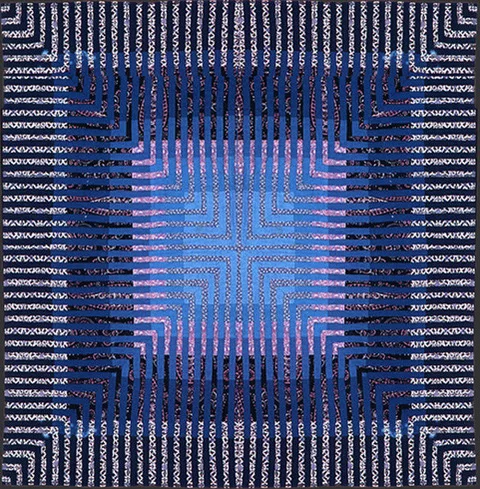
Roberta: Okay, let’s talk about your textiles.
Nancy: I always loved fabric. And in the 80s and 90s, I didn’t know it, but there was this whole art quilt movement. Big, really big. So I could enter. I got myself in magazines all over the place. And made a big reputation, in fact. And then art consultants were selling things to corporations. I had to hire people to sew because I couldn’t keep up up with the demand.
Roberta: Okay. It was sewing?
Nancy: Yes, most of it was fabric collage.
Roberta: So it wasn’t a lot of little squares (quilted together). Such a different way of working though, with fabric and not on the computer.
Nancy: Well, it wasn’t to begin with because I didn’t have a computer. I was painting.
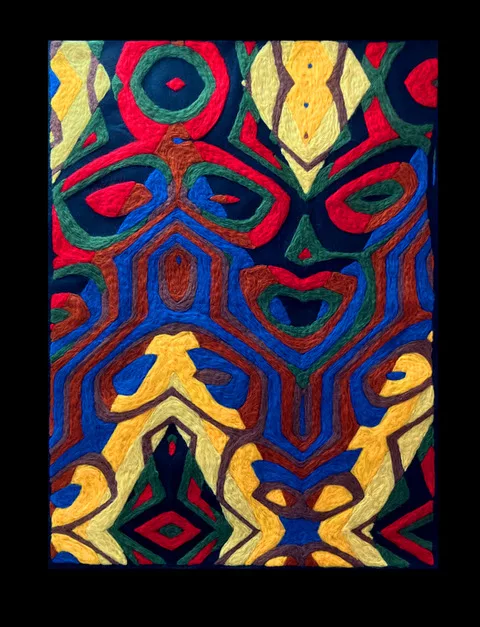
Roberta: There’s a lot of artists that go to art school and they think they’re going to have this art career. Well, first off, that’s very hard to do. And then pretty soon they stop making art, because, well I don’t know, for various reasons.
Nancy: Well, they tire of what they were doing and they don’t want to change. I mean, you need to change, I guess. I mean, I need to change what I’m doing, because it’s fun. The first part is the best part. Discovery. Isn’t that funny? You get encouraged by your little successes.
Roberta: It’s great. Discovery is really a great part of art. But then if you’re cranking out work and not discovering anything new it gets old, and it’s hard to stay with it…
Nancy: Yes that’s true. But I do think that if you keep changing, and you’re always using everything that you had before. And it’s true to you…
Roberta: Organic. It’s organically growing and morphing and changing…Let’s talk about archiving. Do you have a plan for your work?
Nancy: I did inventory everything. Not everything that I’ve sold, but everything I have. It’s a beginning. Recently I have been making handmade books out of old water colors.
Roberta: Oh, that’s amazing.



